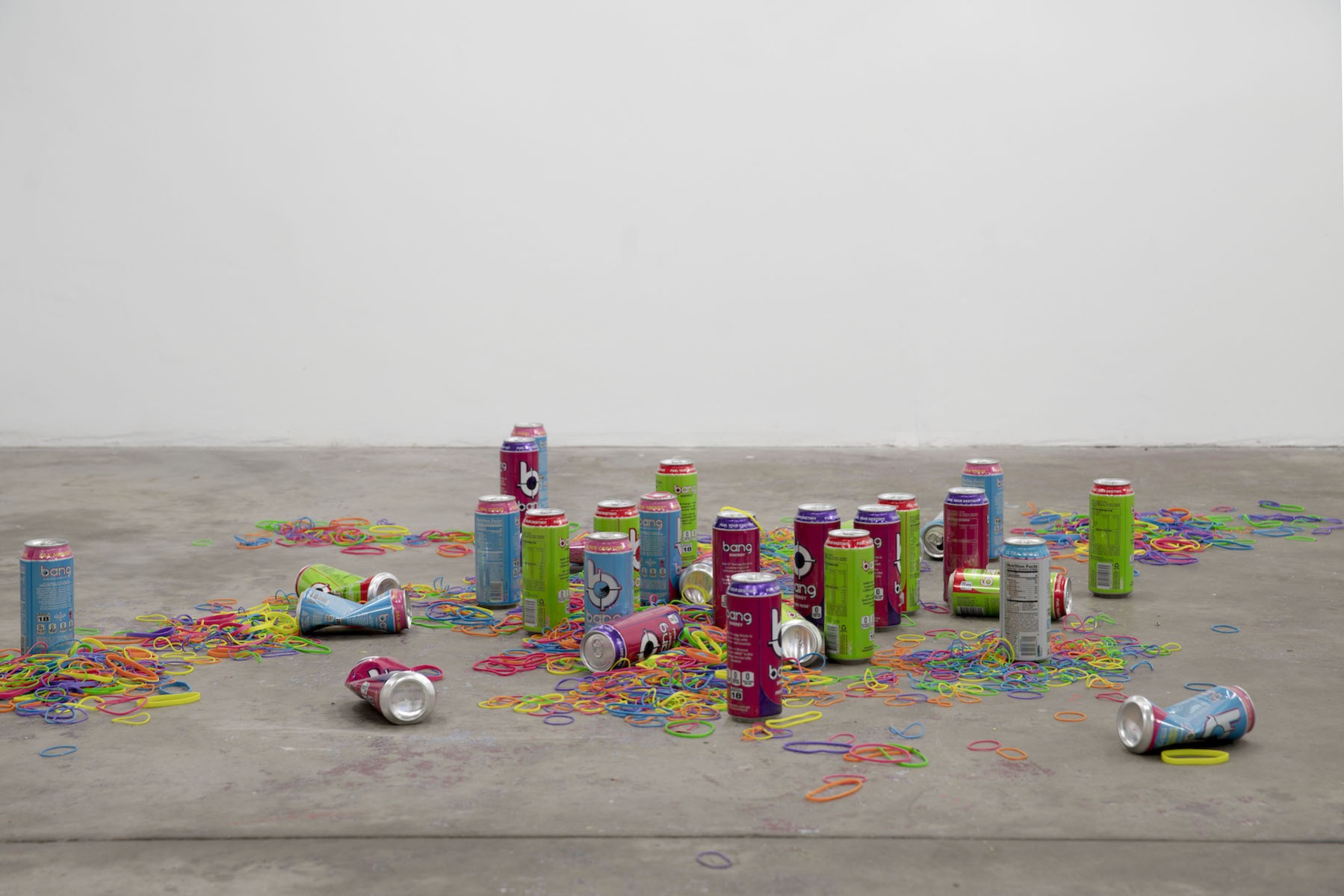Curated across two galleries, Graduart—the University of Southern Queensland’s graduate exhibition—showcases the work of 14 artists. Each gallery is its own distinct space. Recently refurbished, the UniSQ Art Gallery is sleek, air-conditioned, and resembles a small commercial gallery. The School of Creative Arts Gallery is in the foyer of a much older, tired building and is the entrypoint to the school’s teaching spaces and theatre. Emerging local artists have limited spaces to show their work in Toowoomba. Within the ecosystem of council-run art galleries (there are three in the region), a handful of coffee shops, and local ARIs—which have a typical lifespan here of 5 to 10 years—the university has for many years shown the most sustained support for local artists, with the proviso that they are current students, academics, or alumni.
The majority of artists in Graduart are women and accordingly the female experience is explored in many works. Identity, sexuality, female pleasure, the psyche, and the human condition are examined through ceramics, painting, sculpture, and installation. It’s encouraging to see a content warning on entry to the exhibition, reminding us that regional artists don’t shy away from making work that pushes against the conservative status quo.
An exhibition stand-out is Rora Elwell’s ceramic vessels Triumph, Alter Ego and Balance (2023). Described by the artist as self-portraits, they are commanding works, gently undulating and semi-glazed with earthy, bronze tones. Circling the neck of each vessel is a collar of spikes. As a representation of herself, Elwell hints that self-protection is necessary in the process of self-actualisation. Thoughtful gallery lighting throws a curious geometry of intersecting shadows from Elwell’s vessels onto the surrounding wall. Beyond the physical form of self, the shadows suggest a behind-the-scenes tension that runs in tandem to the outward presentation of poise and equilibrium.
Continuing with self-portraiture, Aimee Rowland and Belinda Stanton present two takes on the human condition through painting. In the series Disrupted Identities, Rowland presents frenetic, monotonal renderings of her face on canvases constructed of discarded strangers’ clothing. Each face is partially obscured with thick, sporadic strokes of vibrant colour. Here, there is turmoil and distress, with moments of joy. Rowland’s unconventional canvas, further suggest an anonymous, perhaps like-minded community, who share and absorb these experiences.
Belinda Stanton’s anthropomorphic and hybrid mammalian-amphibian subjects in why are you looking at me and my unfinished thoughts remind me both of Patricia Piccinini’s chimeras and AI-generated visual hallucinations. Like within classic family portraits, the surreal creatures are arranged next to a woman whose long hair and blouse trail off into incomplete outlines. There is a sense that things are still yet to materialise and the figures’ eyes, gently diverted in all directions, wait in mindful anticipation of what’s to come. In masterpiece the subject wears a curious fish/manatee life jacket, propped up by their seven-fingered hand/feet limbs. While Stanton’s figures and forms co-exist in harmonious and helpful indifference, there is an unsettling mood that echoes the artist’s own interest in technologies like AI and the role they have in our contemporary existence.
The body and sexuality are explored in the photography of Jade Courtney. Her work Untitled depicts an ambiguous human form: cropped, contorted red lips and flesh are framed by fishnet material. Courtney’s print transparency is presented on an obsolete medical X-ray viewer, inviting the audience to question their ideas of sexual representation beyond the framework of anatomy. Personally, I would have liked to see more of Courtney’s work. In lieu of this, however, the erotic wire sculptures of Kate de Jude (Hermes and Aphrodite: The Angel of Cunnilingus) and Simone Peterson’s soft sculpture Blue Balls create a conversation around Courtney’s work by examining the female gaze of the eroticised male body.
Jake Twigg is the only artist showing video work. In Untitled (Kiama Trip) he creates a montage of vignettes captured from a road-trip, shot with a vintage camcorder. The moving image has all the hallmarks of a personal, short documentary–mundane, playful, and reflective. In broader terms, Twigg’s work is a reminder that road travel is a constant for regional artists seeking experiences, opportunities, and employment to further their careers.
With one in four Australian artists living in regional cities or towns,[1] Graduart allows audiences the chance to see work by emerging artists who study at a regional university. I wonder how many will choose to continue their art practice in this setting—or trade it for life in a bigger city.
[1] D Throsby & K Petetskaya, 2017, Making Art Work: An Economic Study of Professional Artists in Australia. https://creative.gov.au/advocacy-and-research/regional-arts-summary/#Key-story-3.
Expanded Lemonade coverage of 2023 graduate exhibitions was kindly made possible by Lemonade’s Patreons and generous contributions from Alex Baxter, Amanda Bennetts, Kylie Harries, Lynn Hughes, Kit Kriewaldt, Pippa Macgill, Merilyn & Steve Mayhew, JM Orme, Alethea Richter, Monica Rohan, Adrian Smith, Gavin Smith, Leisa Turner, Hannah Williamson, Nadya Wilson.
Lemonade is continuing to fundraise for three further reviews. Become a Patreon or email editor @ lemonadeletters.com.au to support this unique coverage of Queensland’s emerging artists.
Ben Tupas is an artist and educator. Ben lives and works on Giabal, Jarowair and Western Wakka Wakka land (Toowoomba).








